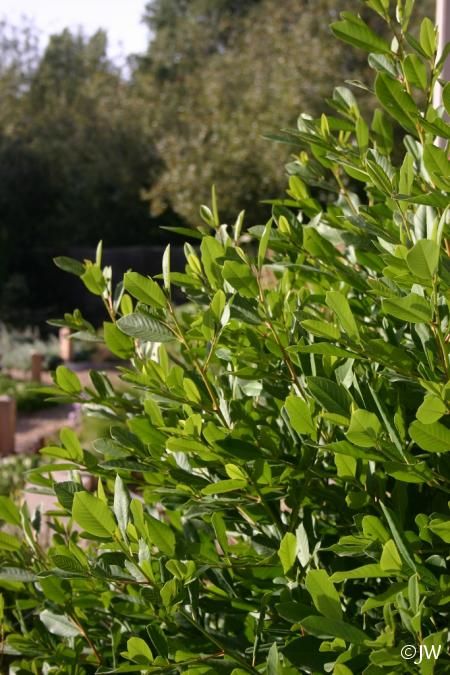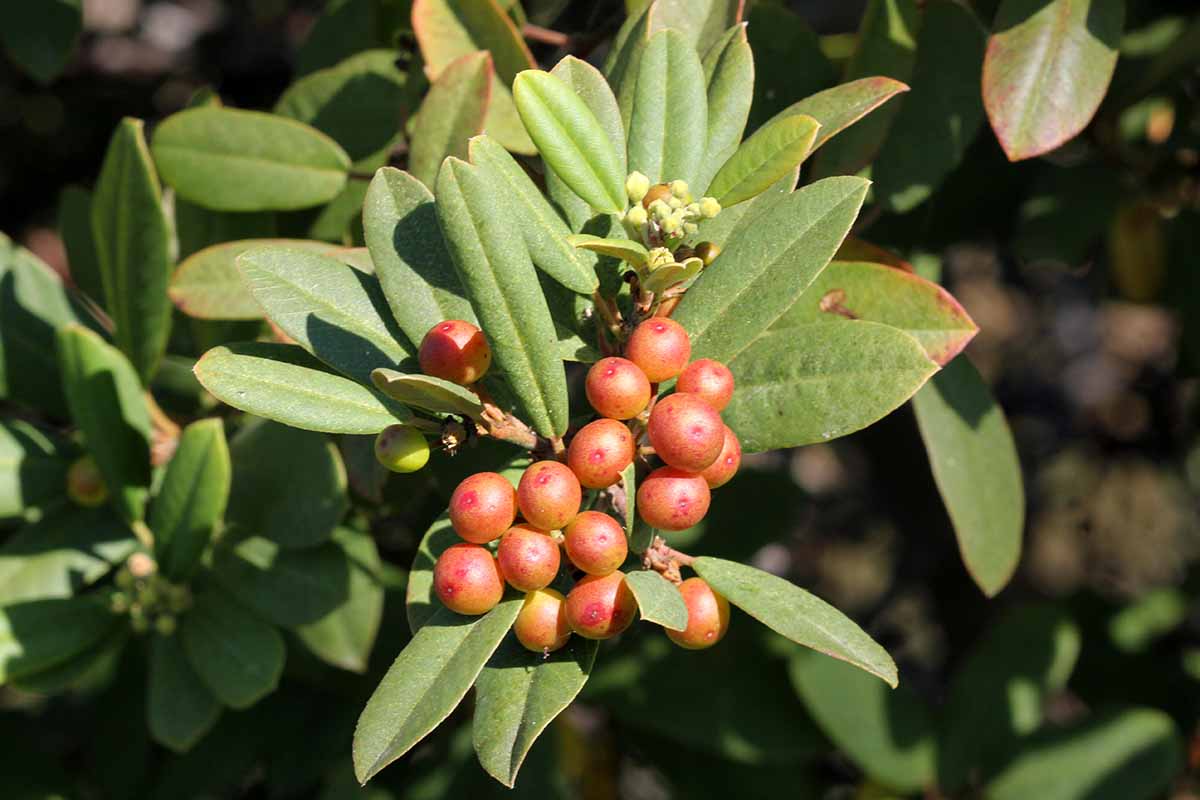Rhamnus californica

Rhamnus californica, commonly known as California Coffeeberry, is a versatile and resilient native shrub found throughout the coastal and foothill regions of California.
Celebrated for its glossy evergreen foliage, clusters of small berries, and ecological versatility, California Coffeeberry holds a prominent place in both natural landscapes and cultivated gardens.
In this comprehensive article, we will explore the botanical nuances, habitat preferences, life cycle, ecological and cultural significance, conservation status, and care guidelines for Rhamnus californica.
Botanical Description
California Coffeeberry belongs to the Rhamnaceae family and is characterized by its dense, rounded habit, reaching heights of 6 to 12 feet tall and wide.
The plant features leathery, dark green leaves that are glossy on the upper surface and paler underneath, providing year-round interest in the landscape.
Inconspicuous greenish-white flowers bloom in spring, giving way to clusters of small, spherical berries that ripen from green to red and finally black in late summer to fall.
These berries are a valuable food source for birds and wildlife, contributing to the plant's ecological importance.
Habitat and Distribution
California Coffeeberry thrives in diverse habitats like coastal sage scrub, chaparral, and oak woodlands, needing well-drained soil and ample sunlight.
Its range spans California, including the Sierra Nevada, and extends into Oregon, Nevada, and Baja California.
Landscaping and restoration projects often utilize Coffeeberry due to its adaptability to various soils, drought tolerance, and wildlife-attracting properties.
Life Cycle and Phenology
As an evergreen shrub, California Coffeeberry exhibits year-round growth and interest in the landscape.
Growth occurs primarily in spring and summer, with new leaves emerging from dormant buds in response to warming temperatures and increasing daylight.
Flowering typically occurs in spring, with the inconspicuous flowers attracting a variety of pollinators, including bees and butterflies.
Following pollination, the plant produces clusters of berries that ripen over the summer months, providing a valuable food source for birds and other wildlife.
California Coffeeberry may undergo periods of dormancy in winter, but its evergreen foliage ensures visual interest throughout the year.
Ecological and Cultural Importance
California Coffeeberry plays a significant ecological role in its native habitat, providing food and habitat for a variety of wildlife species.
The berries are consumed by birds, small mammals, and insects, serving as an important food source during the summer and fall months.
Additionally, the dense foliage and branching structure of California Coffeeberry provide cover and nesting sites for birds, contributing to biodiversity and ecosystem health.
Culturally, California Coffeeberry has been used by indigenous peoples for centuries for its medicinal properties, as well as for basket weaving, dye making, and ceremonial purposes.

Caring for Rhamnus californica
Sunlight
Plant California Coffeeberry in a location that receives partial to full sunlight, as it prefers abundant sunlight for optimal growth and flowering.
Watering
California Coffeeberry is drought tolerant once established and requires minimal irrigation.
Water sparingly, especially during the plant's establishment period, to encourage deep root growth and drought tolerance.
Soil
Plant in well-drained, sandy or loamy soil with good drainage.
California Coffeeberry is adaptable to a variety of soil types but prefers soil with good drainage.
Pruning
California Coffeeberry requires minimal pruning to maintain its shape and remove dead or damaged growth.
Prune lightly after flowering to promote bushy growth and remove any crossed or overcrowded branches.
Fertilizing
California Coffeeberry generally does not require fertilization.
If desired, apply a balanced fertilizer in spring, following the manufacturer's instructions.
Mulching
Apply a layer of organic mulch around the base of the plant to help retain moisture, suppress weeds, and insulate the roots from temperature fluctuations.
Following these care guidelines allows you to cultivate thriving California Coffeeberry shrubs, aiding native plant conservation and beautifying California's landscapes. Whether for aesthetics, ecology, or culture, Coffeeberry enriches outdoor spaces.
Leave a Reply
You must be logged in to post a comment.